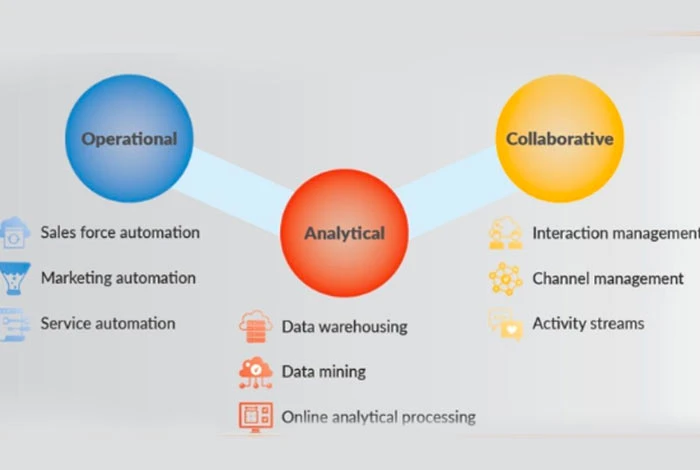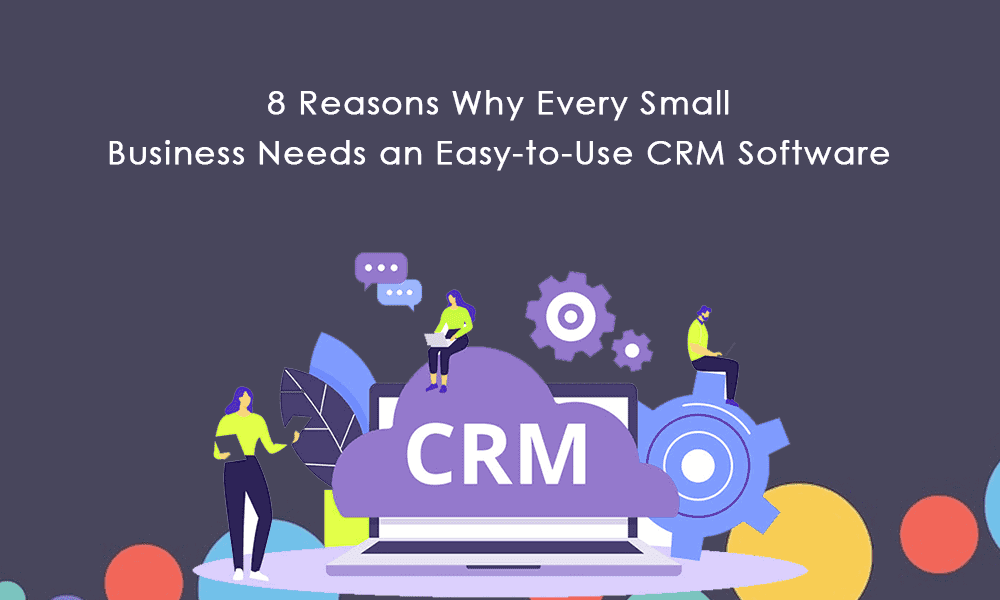
Unlocking Growth: A Comprehensive Guide to CRM Marketing Analytics
In today’s fast-paced business environment, data is king. And when it comes to understanding your customers and optimizing your marketing efforts, CRM (Customer Relationship Management) marketing analytics reigns supreme. This comprehensive guide will delve deep into the world of CRM marketing analytics, exploring its significance, components, benefits, and practical applications. We’ll equip you with the knowledge and tools you need to harness the power of your customer data and drive sustainable growth.
What is CRM Marketing Analytics?
At its core, CRM marketing analytics is the process of collecting, analyzing, and interpreting data derived from your CRM system to gain insights into customer behavior, marketing performance, and overall business effectiveness. It’s about transforming raw data into actionable intelligence that informs strategic decisions and fuels smarter marketing campaigns. Think of it as the detective work of marketing, uncovering hidden patterns and revealing the “why” behind your customer interactions.
Unlike traditional marketing analytics that often focuses on broader metrics like website traffic or ad impressions, CRM marketing analytics provides a granular view of individual customer interactions. This allows you to understand the entire customer journey, from initial contact to purchase and beyond. It’s about building a 360-degree view of your customers.
Key Components of CRM Marketing Analytics
CRM marketing analytics encompasses several key components that work together to deliver valuable insights:
- Data Collection: This involves gathering data from various sources, including your CRM system, website analytics, social media platforms, email marketing tools, and customer service interactions. The more data you collect, the richer the insights you can glean.
- Data Integration: Bringing together data from disparate sources into a unified view is crucial. This often involves using data integration tools or platforms to cleanse, transform, and consolidate your data.
- Data Analysis: This is where the magic happens. Data analysts and marketers use various techniques, such as statistical analysis, data mining, and predictive modeling, to identify trends, patterns, and correlations within the data.
- Reporting and Visualization: Creating clear and concise reports and dashboards to communicate your findings is essential. Data visualization tools help you present complex information in an easy-to-understand format.
- Actionable Insights: The ultimate goal is to translate data analysis into actionable insights that inform your marketing strategies and drive improvements. This involves identifying opportunities for optimization, personalization, and improved customer engagement.
Why is CRM Marketing Analytics Important?
In a world saturated with marketing messages, understanding your customers is more crucial than ever. CRM marketing analytics provides a competitive edge by enabling you to:
- Improve Customer Understanding: Gain a deep understanding of your customers’ preferences, behaviors, and needs. This allows you to tailor your marketing messages and offers to resonate with each individual.
- Enhance Customer Segmentation: Segment your customer base based on various criteria, such as demographics, purchase history, and engagement levels. This enables you to create more targeted and effective marketing campaigns.
- Personalize Customer Experiences: Deliver personalized experiences that cater to individual customer preferences. This can lead to increased customer satisfaction, loyalty, and lifetime value.
- Optimize Marketing Campaigns: Track the performance of your marketing campaigns and identify areas for improvement. This allows you to allocate your marketing budget more efficiently and maximize your ROI.
- Predict Customer Behavior: Use predictive analytics to forecast future customer behavior, such as churn risk or purchase likelihood. This enables you to proactively address potential issues and capitalize on opportunities.
- Increase Sales and Revenue: By optimizing your marketing efforts and providing personalized experiences, you can drive more sales and increase your overall revenue.
- Improve Customer Retention: Identify customers at risk of churning and implement strategies to retain them. This is often more cost-effective than acquiring new customers.
- Make Data-Driven Decisions: Base your marketing decisions on data and insights rather than guesswork. This leads to more informed and effective strategies.
Key Metrics and KPIs for CRM Marketing Analytics
To effectively measure the success of your CRM marketing efforts, it’s essential to track the right metrics and KPIs (Key Performance Indicators). Here are some of the most important ones:
- Customer Acquisition Cost (CAC): The cost of acquiring a new customer. This helps you assess the efficiency of your marketing campaigns.
- Customer Lifetime Value (CLTV): The predicted revenue a customer will generate throughout their relationship with your business. This helps you understand the long-term value of your customers.
- Conversion Rate: The percentage of customers who complete a desired action, such as making a purchase or filling out a form. This measures the effectiveness of your marketing efforts in driving conversions.
- Churn Rate: The percentage of customers who stop doing business with you over a specific period. This helps you identify and address customer attrition.
- Customer Satisfaction Score (CSAT): A measure of customer satisfaction with your products or services. This can be gathered through surveys and feedback forms.
- Net Promoter Score (NPS): A measure of customer loyalty and willingness to recommend your business to others. This can be gathered through surveys.
- Email Open Rate: The percentage of emails that are opened by recipients. This helps you gauge the effectiveness of your email subject lines and content.
- Click-Through Rate (CTR): The percentage of people who click on a link in your email or marketing materials. This measures the engagement with your content.
- Return on Investment (ROI): The profitability of your marketing campaigns. This helps you assess the effectiveness of your marketing spend.
- Lead Conversion Rate: The percentage of leads that convert into paying customers.
- Website Traffic and Engagement Metrics: Track metrics like page views, bounce rate, time on site, and pages per session to understand how users are interacting with your website.
How to Implement CRM Marketing Analytics
Implementing CRM marketing analytics can seem daunting, but breaking it down into manageable steps can make the process easier. Here’s a step-by-step guide:
- Define Your Goals: Clearly define your business objectives and what you want to achieve with CRM marketing analytics. What questions do you want to answer? What problems do you want to solve?
- Choose the Right CRM System: Select a CRM system that meets your specific needs and offers robust analytics capabilities. Consider factors such as scalability, integration options, and reporting features.
- Clean and Organize Your Data: Ensure your data is accurate, complete, and consistent. Cleanse and organize your data to remove duplicates, correct errors, and standardize formats.
- Integrate Your Data Sources: Connect your CRM system with other relevant data sources, such as your website analytics, email marketing platform, and social media channels.
- Select Your Metrics and KPIs: Identify the key metrics and KPIs that align with your business goals. Focus on the metrics that will provide the most valuable insights.
- Set Up Reporting and Dashboards: Create reports and dashboards to visualize your data and track your progress. Choose the right visualization tools to present your data in a clear and concise manner.
- Analyze Your Data: Regularly analyze your data to identify trends, patterns, and correlations. Use statistical analysis, data mining, and predictive modeling techniques.
- Generate Actionable Insights: Translate your data analysis into actionable insights that inform your marketing strategies. What specific actions can you take to improve your performance?
- Implement Your Strategies: Put your insights into action by implementing new marketing campaigns, personalizing customer experiences, and optimizing your existing efforts.
- Monitor and Iterate: Continuously monitor your results and make adjustments to your strategies as needed. CRM marketing analytics is an ongoing process, not a one-time project.
Tools and Technologies for CRM Marketing Analytics
Several tools and technologies can help you implement CRM marketing analytics:
- CRM Systems: Salesforce, HubSpot, Microsoft Dynamics 365, Zoho CRM, Pipedrive.
- Data Integration Tools: Zapier, Informatica, Talend, Fivetran.
- Data Visualization Tools: Tableau, Power BI, Google Data Studio, QlikView.
- Statistical Analysis Software: R, Python (with libraries like Pandas, Scikit-learn), SPSS.
- Marketing Automation Platforms: Marketo, Pardot, ActiveCampaign, Mailchimp.
- Web Analytics Tools: Google Analytics, Adobe Analytics.
Best Practices for CRM Marketing Analytics
To maximize the effectiveness of your CRM marketing analytics efforts, consider these best practices:
- Focus on Data Quality: Ensure your data is accurate, complete, and consistent. Poor data quality can lead to inaccurate insights and flawed decisions.
- Prioritize Relevant Metrics: Don’t get bogged down in tracking too many metrics. Focus on the metrics that are most relevant to your business goals.
- Automate Where Possible: Automate data collection, reporting, and analysis to save time and improve efficiency.
- Use Data Visualization Effectively: Choose the right charts and graphs to present your data in a clear and concise manner. Avoid cluttered dashboards.
- Continuously Test and Optimize: Regularly test and optimize your marketing campaigns based on the insights you gain from your data.
- Foster a Data-Driven Culture: Encourage a data-driven culture within your organization. Make data and insights accessible to everyone and empower them to make informed decisions.
- Train Your Team: Provide your team with the necessary training and resources to effectively use CRM marketing analytics tools and techniques.
- Respect Privacy and Compliance: Adhere to all relevant data privacy regulations, such as GDPR and CCPA. Be transparent with your customers about how you collect and use their data.
Examples of CRM Marketing Analytics in Action
Let’s explore some real-world examples of how businesses are using CRM marketing analytics to achieve their goals:
- Personalized Email Marketing: An e-commerce company uses CRM data to segment its customers based on their purchase history and browsing behavior. They then send personalized email campaigns with product recommendations and exclusive offers, resulting in a significant increase in click-through rates and sales.
- Improved Customer Retention: A subscription-based service analyzes customer churn data to identify customers at risk of canceling their subscriptions. They then proactively reach out to these customers with special offers and personalized support, reducing churn and increasing customer lifetime value.
- Optimized Marketing Spend: A marketing agency uses CRM data to track the performance of its various marketing channels. They analyze which channels are driving the most leads and conversions and then reallocate their marketing budget accordingly, resulting in a higher ROI.
- Targeted Advertising: A retail chain uses CRM data to create targeted advertising campaigns on social media. They segment their customer base based on demographics, interests, and purchase history and then create ads that are tailored to each segment, increasing the effectiveness of their advertising efforts.
- Predictive Lead Scoring: A software company uses CRM data and predictive analytics to score leads based on their likelihood of converting into customers. They then prioritize their sales efforts on the highest-scoring leads, increasing their sales conversion rate.
Challenges and Considerations
While CRM marketing analytics offers numerous benefits, it’s important to be aware of the challenges and considerations involved:
- Data Silos: Data scattered across different systems can make it difficult to get a complete view of your customers.
- Data Quality Issues: Inaccurate, incomplete, or inconsistent data can lead to flawed insights and decisions.
- Lack of Integration: If your CRM system doesn’t integrate well with other data sources, it can limit your ability to analyze your data effectively.
- Complexity: Implementing and managing CRM marketing analytics can be complex, requiring specialized skills and resources.
- Privacy Concerns: Collecting and using customer data raises privacy concerns. It’s essential to comply with all relevant data privacy regulations and be transparent with your customers about how you use their data.
- Resistance to Change: Some organizations may resist adopting a data-driven approach to marketing.
- Need for Skilled Personnel: Analyzing data and generating insights requires skilled data analysts and marketers.
The Future of CRM Marketing Analytics
The field of CRM marketing analytics is constantly evolving, with new technologies and techniques emerging all the time. Here are some trends to watch:
- Artificial Intelligence (AI) and Machine Learning (ML): AI and ML are being used to automate data analysis, predict customer behavior, and personalize customer experiences.
- Big Data Analytics: As businesses collect more data than ever before, big data analytics tools are becoming increasingly important for processing and analyzing large datasets.
- Real-Time Analytics: The ability to analyze data in real-time allows marketers to respond to customer behavior and market trends more quickly.
- Hyper-Personalization: Businesses are striving to deliver increasingly personalized experiences, tailoring their marketing messages and offers to each individual customer’s preferences and needs.
- Data Privacy and Security: With increasing concerns about data privacy, businesses are prioritizing data security and compliance with regulations such as GDPR and CCPA.
Conclusion: Embrace the Power of Data
CRM marketing analytics is no longer a luxury; it’s a necessity for businesses looking to thrive in today’s competitive landscape. By embracing the power of data, you can gain a deeper understanding of your customers, optimize your marketing efforts, and drive sustainable growth. Start by defining your goals, choosing the right tools, and implementing a data-driven approach. The insights you gain will empower you to make smarter decisions, personalize customer experiences, and ultimately achieve greater success. Don’t just collect data; use it to unlock your full potential.


